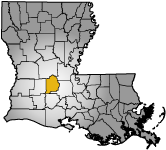SECTION: 507 RESTRAINTS
SECTION: 507
TITLE: RESTRAINTS
EFFECTIVE DATE: February 15, 2017
POLICY:
Facility staff shall use instruments of restraint only when necessary to prevent escape, bring an offender safely under control, and/or protect the safety of the offender, other offenders, staff and security of the facility.
DISCUSSION:
Restraints are a necessity in a correctional environment but can be a major item for litigation if handled incorrectly. Staff shall use the least amount restraint as practical for every incident. Strict policy/procedure and proper training can ensure the safety and efficiency of using restraints.
DEFINITIONS:
- Physical Force: Only that amount of force necessary for self-defense, protection of others, protection of property, or prevention of escapes.
- Instruments of Restraint: Devices used to restrict physical activity. Examples include handcuffs, , plastic wrist and ankle cuffs and belts, and leg irons and waist chains.
- Restraint Chair: The offender is completely immobilized in a seated position, on a movable chair designed for such function.
Restraints shall never be applied as punishment, as a disciplinary measure, or for a longer period of time than is strictly necessary
Instruments of restraint shall not be used except in the following circumstances:
- As a precaution against escape during a transfer;
- For health care reasons;
- To prevent an offender from injuring self or others, or from damaging property;
- Whenever an offender is transported outside of the facility.
When a high-risk offender in a Special Management Unit is escorted out of their assigned housing unit, the offender shall be restrained with a minimum of handcuffs, leg irons, and a waist chain.
Whenever restraints are applied:
- Handcuffs, shackles and belly chains shall be checked to ensure proper circulation;
- Handcuffs and shackles shall be double locked;
- Offenders in restraints shall be kept separate from unrestrained offenders.
Restraints on pregnant offenders during active labor and the delivery of the child is prohibited and shall only be used in extreme instances and not for more time than is absolutely necessary.



